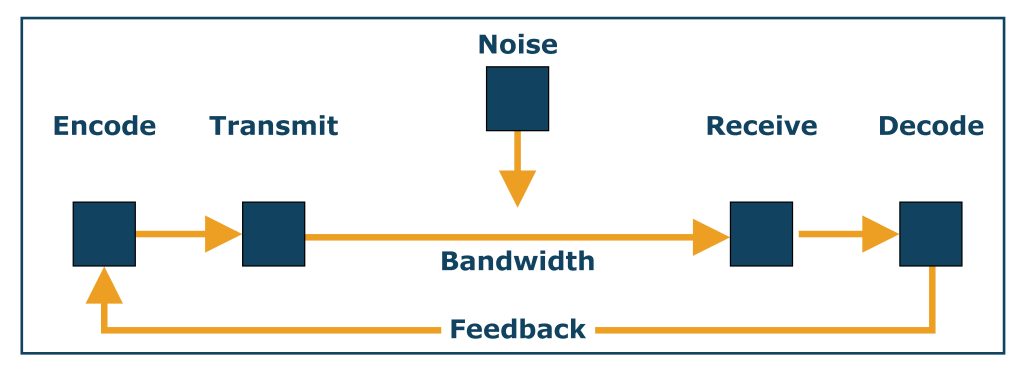The single biggest problem in communication is the illusion that it has taken place.
George Bernard Shaw
Mike Jones, one of our guides, has a day job running satellite communications for a large company. I love his story of sitting next to someone on a commercial flight. The frustrated passenger was trying to get the WiFi to work in air, and turned to Mike saying can you believe how hard this is?
Mike just laughed and said, “yea, it has to leave a moving airplane, go to space, and then find us again…”
Claude Shannon came up with the mathematical architecture for electronic communication in this paper. I don’t understand much past the first section (when the letters start to mean numbers), but the basic theory has helped me become a much better communicator and our clients have consistently found it valuable.
Here is a simple diagram.

Claude Shannon published information theory in 1948. It has been a foundation for electronic communication and the internet since. Read more about it here!
Common communication breakdowns
Every step of this process has potential pitfalls, and we don’t even go into noise here. Where does your communication tend to fall apart?
Encode: To get information from one point to another, we have to translate the jumble of thoughts in our heads into something that will be compatible with the medium used to move the information (transmission method) and be compatible with the person who gets the message (receiver.)
Transmission compatibility: Information moves over myriad channels. A look, a text, a letter, a conversation, tone, and stories can all all move information from once place to another. We often use the wrong medium for the message though. An email about a sensitive topic, a breakup by text, or a long winded in person update that should have been an email all end up being frustrating at best and hurtful at worst.
Receiver compatibility: J. D. Schramm, a Stanford professor, sums up communication with the acronym AIM: Audience, Intent, and Medium. Check in with yourself when you communicate. Are you thinking about what you want to say, or what they need to hear? Are you thinking about how you want to say it or how they will receive it? Make the message for the other person, not for you.
Transmit: A common pitfall in communication is NOT communicating. Sometimes we assume that we communicated or think that the information is so obvious that we don’t need to communicate it. Other times we simply forget that we did not communicate or imagine that we will bring it up later like the bag of dog poop we forget to pick up on the way out of the park. Regardless of the reason, good communicators say it early, often, and clearly.
Personally, I have learned to recognize the “hmm, I hope they know [insert assumption here]” thought as a cue to speak up.
Receive: We hear about active listening all of the time, and we nod along dutifully. The whole nodding and paraphrasing is frankly annoying though. True listeners follow Stephen Covey’s habit #5: “Seek first to understand, then to be understood.” If you truly want to understand, you’ll look for and ask about how the other person feels. You’ll consider and ask how they want you to feel. You’ll genuinely clarify and ask curious questions. Don’t always assume people around you communicate poorly, first check your receiver!
Decode: We all look at the world a little bit differently, so even when we listen with curiosity we still filter the meaning of the other person’s message through our own perspective. Usually this is ok, but if our decoder is adding information that is not there or distorting the message we could both think we share an understanding when we don’t. That leads to maximum frustration down the road.
Feedback: A clear feedback loop for communication can smooth out misunderstandings before they even start. This could be as simple as asking people to repeat back what they heard. Often people are afraid to admit they did not understand your instructions and simply hope they can figure it out later. Getting the feedback early in the process can eliminate so much waste and frustration.
Use phrases like “I think you’re saying” or “you must feel” to give feedback on understanding. Use phrases like “can you tell me what your next step is?” or “what do you think about that?” to initiate feedback.
Either way, don’t let fear and ego get in the way of a continuous loop of communication!




